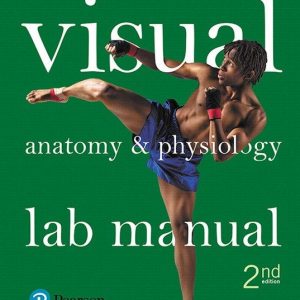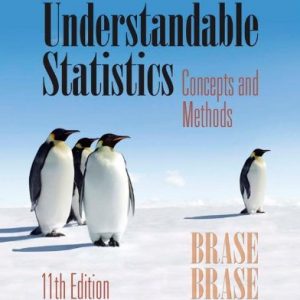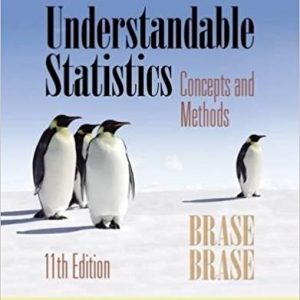This is completed downloadable of Statistics for Management and Economics 11th Edition Keller Solutions Manual.

Product Details:
- ISBN-10 : 1337093459
- ISBN-13 : 978-1337093453
- Author: Keller
Discover how statistical methods and tools are vital for today’s managers as you learn how to apply these tools to real business problems. STATISTICS FOR MANAGEMENT AND ECONOMICS, 11E emphasizes applications over calculation using a proven three-step “ICI” approach to problem solving. You learn how to IDENTIFY the correct statistical technique by focusing on the problem objective and data type; how to COMPUTE the statistics by hand or using Excel or XLSTAT; and how to INTERPRET results in the context of the problem. Extensive data-driven examples, exercises, and cases address the functional areas of business and demonstrate how marketing managers, financial analysts, accountants, and economists rely on statistical applications. Engaging cases focus on climate change and the relationship between payroll and wins in professional sports, while dozens of exercises feature the returns on 40 stocks, which are used to develop the market model and portfolio diversification.
Table of Content:
- Chapter 1: What Is Statistics?
- 1-1: Key Statistical Concepts
- 1-2: Statistical Applications in Business
- 1-3: Large Real Data Sets
- 1-4: Statistics and the Computer
- Appendix 1: Material to Download
- Chapter 2: Graphical Descriptive Techniques I
- Introduction
- 2-1: Types of Data and Information
- 2-2: Describing a Set of Nominal Data
- 2-3: Describing the Relationship between Two Nominal Variables and Comparing Two or More Nominal Dat
- Chapter 3: Graphical Descriptive Techniques II
- Introduction
- 3-1: Graphical Techniques to Describe a Set of Interval Data
- 3-2: Describing Time-Series Data
- 3-3: Describing the Relationship between Two Interval Variables
- 3-4: Art and Science of Graphical Presentations
- Chapter 4: Numerical Descriptive Techniques
- Introduction
- Sample Statistic or Population Parameter
- 4-1: Measures of Central Location
- 4-2: Measures of Variability
- 4-3: Measures of Relative Standing
- 4-4: Measures of Linear Relationship
- 4-5: (Optional) Applications in Finance: Market Model
- 4-6: Comparing Graphical and Numerical Techniques
- 4-7: General Guidelines for Exploring Data
- Appendix 4: Review of Descriptive Techniques
- Chapter 5: Data Collection And Sampling
- Introduction
- 5-1: Methods of Collecting Data
- 5-2: Sampling
- 5-3: Sampling Plans
- 5-4: Sampling and Nonsampling Errors
- Chapter 6: Probability
- Introduction
- 6-1: Assigning Probability to Events
- 6-2: Joint, Marginal, and Conditional Probability
- 6-3: Probability Rules and Trees
- 6-4: Bayes’s Law
- 6-5: Identifying the Correct Method
- Chapter 7: Random Variables and Discrete Probability Distributions
- Introduction
- 7-1: Random Variables and Probability Distributions
- 7-2: Bivariate Distributions
- 7-3: (Optional) Applications in Finance: Portfolio Diversification and Asset Allocation
- 7-4: Binomial Distribution
- 7-5: Poisson Distribution
- Chapter 8: Continuous Probability Distributions
- Introduction
- 8-1: Probability Density Functions
- 8-2: Normal Distribution
- 8-3: (Optional) Exponential Distribution
- 8-4: Other Continuous Distributions
- Chapter 9: Sampling Distributions
- Introduction
- 9-1: Sampling Distribution of the Mean
- 9-2: Sampling Distribution of a Proportion
- 9-3: Sampling Distribution of the Difference between Two Means
- 9-4: From Here to Inference
- Chapter 10: Introduction to Estimation
- Introduction
- 10-1: Concepts of Estimation
- 10-2: Estimating the Population Mean When the Population Standard Deviation Is Known
- 10-3: Selecting the Sample Size
- Chapter 11: Introduction to Hypothesis Testing
- Introduction
- 11-1: Concepts of Hypothesis Testing
- 11-2: Testing the Population Mean When the Population Standard Deviation Is Known
- 11-3: Calculating the Probability of a Type II Error
- 11-4: The Road Ahead
- Chapter 12: Inference About a Population
- Introduction
- 12-1: Inference about a Population Mean When the Standard Deviation Is Unknown
- 12-2: Inference about a Population Variance
- 12-3: Inference about a Population Proportion
- 12-4: (Optional) Applications in Marketing: Market Segmentation
- Chapter 13: Inference about Comparing Two Populations
- Introduction
- 13-1: Inference about the Difference between Two Means: Independent Samples
- 13-2: Observational and Experimental Data
- 13-3: Inference about the Difference between Two Means: Matched Pairs Experiment
- 13-4: Inference about the Ratio of Two Variances
- 13-5: Inference about the Difference between Two Population Proportions
- Appendix 13: Review of Chapters 12 and 13
- Chapter 14: Analysis of Variance
- Introduction
- 14-1: One-Way Analysis of Variance
- 14-2: Multiple Comparisons
- 14-3: Analysis of Variance Experimental Designs
- 14-4: Randomized Block (Two-Way) Analysis of Variance
- 14-5: Two-Factor Analysis of Variance
- 14-6: (Optional) Applications in Operations Management: Finding and Reducing Variation
- Appendix 14: Review of Chapters 12 to 14
- Chapter 15: Chi-Squared Tests
- Introduction
- 15-1: Chi-Squared Goodness-of-Fit Test
- 15-2: Chi-Squared Test of a Contingency Table
- 15-3: Summary of Tests on Nominal Data
- 15-4: (Optional) Chi-Squared Test for Normality
- Appendix 15: Review of Chapters 12 to 15
- Chapter 16: Simple Linear Regression and Correlation
- Introduction
- 16-1: Model
- 16-2: Estimating the Coefficients
- 16-3: Error Variable: Required Conditions
- 16-4: Assessing the Model
- 16-5: Using the Regression Equation
- 16-6: Regression Diagnostics—I
- Appendix 16: Review of Chapter 12 to 16
- Chapter 17: Multiple Regression
- Introduction
- 17-1: Model and Required Conditions
- 17-2: Estimating the Coefficients and Assessing the Model
- 17-3: Regression Diagnostics—II
- 17-4: Regression Diagnostics—III (Time Series)
- Appendix 17: Review of Chapters 12 to 17
- Chapter 18: Model Building
- Introduction
- 18-1: Polynomial Models
- 18-2: Nominal Independent Variables
- 18-3: (Optional) Applications in Human Resources Management: Pay Equity
- 18-4: (Optional) Stepwise Regression
- 18-5: Model Building
- Chapter 19: Nonparametric Statistics
- Introduction
- 19-1: Wilcoxon Rank Sum Test
- 19-2: Sign Test and Wilcoxon Signed Rank Sum Test
- 19-3: Kruskal–Wallis Test and Friedman Test
- 19-4: Spearman Rank Correlation Coefficient
- Appendix 19: Review of Statistical Inference (Chapters 12 to 19)
- Chapter 20: Time-Series Analysis and Forecasting
- Introduction
- 20-1: Time-Series Components
- 20-2: Smoothing Techniques
- 20-3: Trend and Seasonal Effects
- 20-4: Introduction to Forecasting
- 20-5: Forecasting Models
- Chapter 21: Statistical Process Control
- Introduction
- 21-1: Process Variation
- 21-2: Control Charts
- 21-3: Control Charts for Variables: and S Charts
- 21-4: Control Charts for Attributes: P Chart
- Chapter 22: Decision Analysis
- Introduction
- 22-1: Decision Problem
- 22-2: Acquiring, Using, and Evaluating Additional Information
- Chapter 23: Conclusion
- 23-1: Twelve Statistical Concepts You Need for Life after the Statistics Final Exam
- Appendix A: Data File Sample Statistics
- Appendix B: Tables
- 1: Binomial Probabilities
- 2: Poisson Probabilities
- 3: Cumulative Standardized Normal Probabilities
- 4: Critical Values of the Student t Distribution
- 5: Critical Values of the x2 Distribution
- 6: Critical Values of the F-Distribution: A = .05
- 7: Critical Values of the Studentized Range, a = .05
- 8: Critical Values for the Durbin-Watson Statistic, a = .05
- 9: Critical Values for the Wilcoxon Rank Sum Test
- 10: Critical Values for the Wilcoxon Signed Rank Sum Test
- 11: Critical Values for the Spearman Rank Correlation Coefficient
- 12: Control Chart Constants
- Appendix C: Answers to Selected Even-Numbered Exercises
- Index





